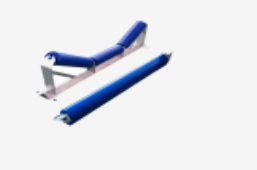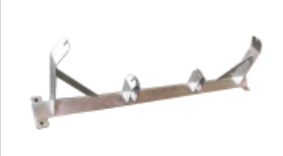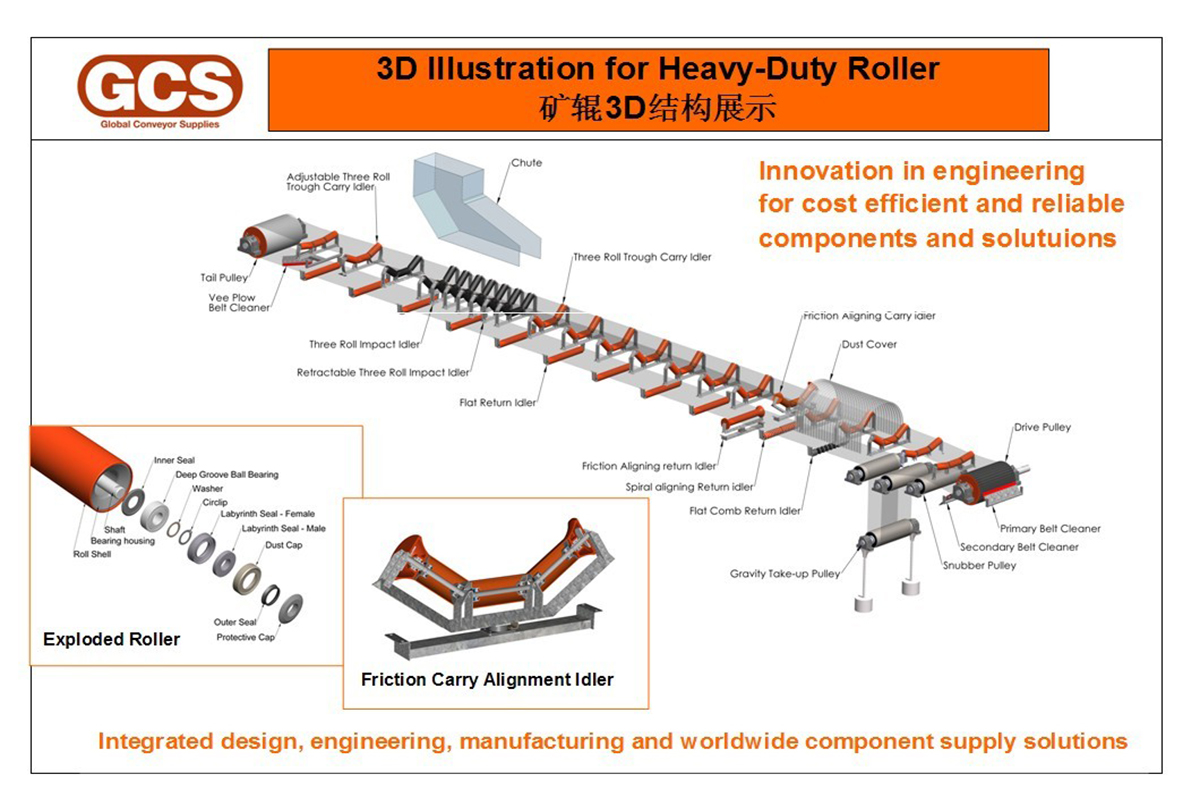Belt Conveyor
A Belt conveyor is necessary equipment for crushing and construction waste production lines, mainly used to connect different levels of crushing equipment, sand-making equipment, and screening equipment. It is widely used in cement, mining, metallurgy, chemical industry, foundry, building materials, and other industries. The operating conditions of belt conveyors can range from -20°C to +40°C, while the temperature of the conveyed material can be below 50°C. In the industrial production process, belt conveyors can act as a link between production facilities to achieve continuity and automation of the production process, thus increasing productivity and reducing labor intensity. Sand and gravel production lines have approximately four to eight belt conveyors.
The belt conveyor is the most widely used and versatile mode of mechanical conveying system for conveying material horizontally or inclined up or down. This is a typical belt conveyor arrangement for a belt conveyor with long trough belts
Image 1 represents a typical belt conveyor arrangement with the following main components of the system.
Image from GCS Global Conveyor Supplies
1. The belt forms the moving and supporting surface on which the material being conveyed is carried.
2. Idler pulleys, form the carrying and return strand of the belt for support.
3. Pulleys, support and move the belt and control its tension.
4. The drive, powers one or more pulleys to move the belt and its load.
5. The structure supports and maintains the alignment of the rollers and pulleys and supports the drive machinery.
In contrast, the carrier conveyor rollers are one of the most used and at the same time one of the most important components of the load conveyor system, which must be robust and durable while at the same time taking into account the minimum value of damage to the belt. Therefore, the energy consumption of each belt conveyor unit is becoming increasingly important.
| Number |
Product Picture |
Product Name |
Category |
Summary |
|
1 |
 |
Vee Return Assy | Conveyor Frames | Vee Return used on a full range of load carrying operations, to assist with tracking on return side of the belt |
|
2 |
 |
Conveyor Frames | Offset Trough Frame set for medium to heavy conveyor load operations where trough belt shape is required | |
|
3 |
 |
Steel Trough Set (Inline) | Conveyor Frames | Inline Trough Frame set for medium to heavy conveyor load operations where trough belt shape is required |
|
4 |
 |
Trough Frame (Empty) | Conveyor Frames | Inline Trough Frame with additional bracing for extra heavy belt load and transfer operations |
|
5 |
 |
Retractable Trough Frame (Removal) | Conveyor Frames | Retractable Trough Frame for dismantling and removal of complete frame assembly, with the carry belt remaining in place. |
|
6 |
 |
Steel Trough Set (Offset) | Conveyor Frames | Offset Trough Frame set for medium to heavy conveyor load operations where trough belt shape is required. |
|
7 |
 |
Transition Frame Impact Offset | Conveyor Frames | Offset Impact Roller Transition Frame with additional strength bracing and fixed degree incremental belt angle adjustment. |
|
8 |
 |
Transition Frame Steel Offset | Conveyor Frames | Offset Steel Roller Transistion Frame with fixed degree incremenatal belt angle adjustment. |
|
9 |
 |
Steel Carry Idler + Brackets | Conveyor Rollers | Steel Carry Idler for general medium to heavy load, mid conveyor operation where trough belt angle is not required. |
|
10 |
 |
Training Return Idler Assy | Conveyor Frames | Return training idler used in various belt widths and diameters for supporting and tracking the belt on the return belt run. |
Attached commonly used bracket combination table.
The modeling-based standard provides a concise analytical model based on resistance, in particular primary resistance. The model requires knowledge of three friction coefficients, including ambient temperature correction, belt idler friction, and belt load bending. They, therefore, form the basis for the models presented in this paper. However, all modeling criteria are based on typical values of the friction coefficients and require a rule of thumb and an experienced engineer to estimate them. Therefore, parametric models that can be estimated using field measurements become a more useful and practical alternative for accurately predicting energy consumption.
GCS conveyor roller manufacturer reserves the right to change dimensions and critical data at any time without any notice. Customers must ensure that they receive certified drawings from GCS prior to finalizing design details.
Post time: Apr-22-2022




